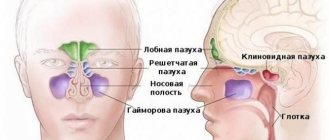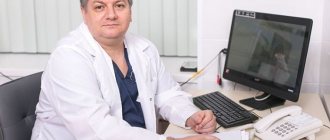Rhinolalia is a speech disorder manifested by severe distortion of speech and incorrect pronunciation of individual sounds. As a rule, the development of this speech pathology is caused by an abnormal structure of the speech apparatus. The speech of a child with rhinolalia has a specific sound: since this pathology involves a violation of the resonator function of the nose, air flows incorrectly, which provokes deformation of sounds.
In addition to sound distortions, rhinolalia can cause difficulties in the lexical and grammatical development of a child’s speech. To exclude the development of psychological problems, specialized work with a child with rhinolalia is necessary.
Symptoms of rhinolalia
With organic rhinolalia, the diagnosis is made in infancy. From the first days such children have problems with nutrition and breathing and are susceptible to respiratory diseases.
The formation of speech in children with rhinolalia is difficult and occurs after 2 years. A sick child pronounces sounds, syllables and words late. They are unclear and difficult to understand.
In the open form, the sounds have a nasal timbre and are indistinguishable from each other. Closed rhinolalia manifests itself in a violation of the pronunciation of nasal sounds and their replacement with others. The timbre of the voice also suffers.
The disease also causes other disorders - dysgraphia and dyslexia, as well as persistent psychological discomfort. That’s why diagnosing rhinolalia and treating it is so important.
Diagnosis of rhinolalia
The examination of children and adults with rhinolalia is multifaceted and is carried out by various specialists:
- otolaryngologist;
- speech pathologist;
- speech therapist;
- neurologist;
- orthodontist;
- phoniatrist;
- pediatrician
An examination by specialized specialists allows us to identify the etiology of the disease, characterize as accurately as possible the nature of pathological changes and the severity of all symptoms. The following instrumental diagnostic methods are important:
- X-ray of the nasopharynx;
- rhinoscopy;
- electromyography;
- pharyngoscopy, etc.
These techniques make it possible to visualize the nature of pathological changes and their severity in each individual patient.
Of course, the most significant is an examination by a speech therapist, who, using a number of progressive techniques, will be able to assess the following parameters:
- structure of the articulatory apparatus;
- his mobility;
- voice disorders;
- parameters of physiological and phonation breathing, etc.
To diagnose open rhinolalia, the Gutzmann technique is used, which is based on the fact that the patient pronounces the sounds “a” and “i” alternately, while the doctor opens and closes the nasal passages. In the presence of pathological changes, the vibration of the wings of the nose is very clearly felt, and when the nasal passages are pinched, the sounds are significantly muffled. Thus, it is possible to diagnose the open form of rhinolalia.
Correction of rhinolalia at a speech therapy center in Moscow
Corrective work with children with rhinolalia should begin when a problem is detected in order to achieve positive results by adolescence. Depending on the form, speech therapy work can be the main or complementary work of other specialists.
The role of a speech therapist for rhinolalia is to consolidate sound pronunciation skills. Massage is used, the development of velopharyngeal closure, the development of exhalation and sound pronunciation, the elimination of nasality, the development of vocabulary and work on lexical literacy.
- Correction for functional rhinolalia. A positive effect can be achieved through sessions with a speech therapist. They include massage, breathing exercises, work on developing the correct pronunciation of sounds and auditory attention.
- Correction for organic form. The effectiveness depends on the surgical intervention, the timeliness of the operation and the completeness of the speech therapist’s work with the child.
Cause of rhinolalia
Rhinolalia usually occurs in an open form. It occurs when there is a split in the hard and soft palate, the alveolus of the lip, or the upper part of the entire speech apparatus. The causes of the pathology are caused by various highly pathogenic effects on the embryo in the period between the 5th and 8th weeks of development.
Typically, the reasons for such effects are associated with problems of the mother’s body during pregnancy such as:
- Flu;
- Mumps;
- Toxoplasmosis;
- Rubella;
- All kinds of endocrine disruptions;
- Abuse of bad habits (alcohol, smoking, etc.);
- ENT disorders in the fetus.
- The causes of the appearance of a closed form of rhinolalia are usually:
- Deviation of the nasal septum;
- Fibroids;
- Polyps;
- Tumors;
- Critical proliferation of adenoids.
Where to treat rhinolalia to be sure of the result
The NeuroSpectrum Center for Pediatric Speech Neurology and Rehabilitation is a modern medical center that treats patients with impaired or absent speech, mental development disorders, developmental delays, and so on. Patients diagnosed with Rhinolalia
This is also not uncommon here, and the center knows exactly how to make a correct diagnosis and what treatment will be most effective.
The specialists of our Center have extensive experience working with patients with rhinolalia; they have modern diagnostic and medical equipment at their disposal, so we are ready to solve problems of any level of complexity. However, it must be remembered that at an earlier stage of rhinolalia, treatment will be less expensive and more effective, so you should not delay contacting specialists.
Types of cleft palate
Rhinolalia is often a consequence of clefts in the oral cavity, which can be congenital or acquired. Among congenital clefts there are clefts of the face, lip, nose, hard and soft palate. The degree of paresis varies from facial asymmetry to complex combined distortions of parts of the face and complete asymmetry in the eye. Clefts can be unilateral or bilateral. Unilateral are more often observed on the left (70%), more often in men than in women. 69% of men have a cleft lip in combination with a cleft palate, but of the remaining 31%, women are twice as likely to have an isolated cleft palate.
The following types of clefts have been recorded in medicine:
isolated cleft lip (“cleft lip”);
- combination of cleft lip and alveolar process;
- lips, alveolar process and hard palate;
- lips, alveolar process of the hard and soft palate (“cleft palate”);
- damage to the alveolar process and hard palate;
- paresis of the hard and soft palate;
- defect of the soft palate;
- cleft of the small tongue.
Cleft palates are often combined with clefts in the nasal septum, resulting in deformation in the patient - a double nose, a proboscis instead of a nose. The nasal passages may even become clogged.
Acquired clefts occur as a result of tumors, injuries, wounds, and frequent operations. More often they occur in people working in mines, logging sites, and participating in military operations involving explosions.
Correction methods
Treatment of rhinolalia includes a whole range of measures aimed at maximizing the elimination of speech defects.
If a child is diagnosed with congenital rhinolalia, then correction of the disorder begins with the elimination of defects of anatomical origin. From birth, such children begin to be fed using a tube, which is selected taking into account the characteristics of the cleft.
A special prosthesis, an obturator, is also made to close the nonunion. This prosthesis facilitates the processes of eating, breathing and speaking.
Late use of an obturator is less effective, since the child begins to develop incorrect tongue position with age. The obturator changes as the child grows and is used until the moment of surgical intervention, which, unfortunately, cannot be done without.
Maxillofacial disorders are subject to surgical intervention. Nasality with open rhinolalia is treated both before and after surgery.
As a rule, cleft lip surgery is performed at 2–3 months of a child’s life. Operations on the palate are carried out after two years, if the child has lost all his teeth. In weakened children, surgery is postponed to a later date or carried out in several stages.
Surgeries allow you to restore the integrity of the speech apparatus and the proper functioning of the palate.
Comprehensive correction of rhinolalia
If surgical intervention is necessary, it should be performed; for milder cases, a number of measures are provided to restore the correct pronunciation of sounds.
There is a specially designed massage of the soft palate, which is in a flaccid state at the time of rhinolalia.
- The massage is carried out with a clean finger, preferably treated with an antiseptic or alcohol.
- Stroking is performed at the border of the soft and hard palate.
- When the child gets used to it, you should ask him to pronounce the sound [a] in a drawn-out manner, while continuing to massage the palate.
- After stroking, you can add a zig-zag movement.
- Soft pressure is applied pointwise and several times with light pushes.
If the child is old enough, you can sit him in front of a mirror and ask him to do this massage on his own; over time, he should be able to massage it without the help of his hands, but only with the help of the tip of his tongue.
It is important to remember that the main thing is the adult’s interest and support. This path is quite long and labor-intensive; you need to let the child understand that you are on his side and will help if necessary.
It is also worth considering that a gag reflex is possible. Therefore, it is recommended to do massage some time after eating.
In addition to massage, there are a number of exercises that you need to do with your child:
- Drink a glass of warm water slowly and in small sips.
- Gargle with warm water, long and slowly.
- Open your mouth wide to imitate a cough.
- Invite your child to attack a piece of paper with his voice, using the sounds: [a], [u], [o], [e], [i], [s].
The primary causes may also be hidden in the nasal cavity. Therefore, you need to add secondary tasks to the exercises to restore breathing.
Such exercises should be started after adenoids and polyps have been removed or surgery has been performed to correct a deviated nasal septum. Only after all the manipulations should you begin to restore proper breathing.
It is difficult for children to concentrate on daily training; adults will have to work hard to carry out recovery in a playful way.
Some exercises that will help to interest your child in a playful way:
Snowstorm.
Balls of cotton wool are tied to the fingers, forming snowflakes; the child is invited to blow on them so that they spin in a blizzard dance;
Ball game.
The tongue, like all children, loves to play with a ball; first you need to inflate it (take a deep breath and puff out your cheeks), and then kick it well (first deflate your cheeks, and then exhale through your mouth).
After playing with the ball, it must be inflated (with the sound “s-s-s”, the child blows air through almost clenched teeth, the lips should be stretched in a smile, and the tip of the tongue rests on the teeth);
Flute.
Playing musical instruments is very exciting; the child is encouraged to play the pipe (roll his tongue into a tube and blow into it).
Music can be heard on the fingertips when the child brings his palm to his mouth.
One option is to have a party every day and inflate balloons.
It is also important to carry out articulation exercises, which are designed to invigorate the tip of the tongue and make it mobile. These exercises will also be useful for the development of lips and cheeks; you need to completely restore the speech apparatus.
A few simple exercises for your child:
Boa.
Imagine that the tongue is a snake and it slowly descends from the mouth; if possible, the tongue curls into a tube.
And now it is no longer the tongue of the boa constrictor, but the child himself has turned into a boa constrictor and sticks out his tongue, making oscillatory movements in the air.
Cuckoo.
The cuckoo has turned from a clock into a tongue, and now it needs to make circular movements with its tongue, its mouth is wide open, its tongue touches its lips, moving slowly, like the hands of a clock.
Swing.
The tongue also wants to ride on the swing. Up to the nose, down to the chin.
Doctor.
The child gives injections to the sore cheeks with his tongue. The tongue presses from the inside one by one on the cheeks.
The main thing with rhinolalia is to support the child and help him cope with the disease; he relies on your help.
The course of treatment can drag on for a long time, you should not give up, and it is also advisable to involve a speech therapist to help ensure that tasks are completed correctly.
Sometimes you have to wait months and even years for results. You should not forget about this and move towards the goal together with your child!
Related posts:
- What do we know about rhinolalia? Rhinolalia in children is diagnosed quite simply. Also her methods...
- What is "War and Peace" about? Summary of the novel “War and Peace” by chapters. All answers...
- What exercises are useful for rhinolalic patients? Corrective exercises for rhinolalia - articulation exercises, breathing and others...
- Rhoticism in speech - complete information Rhotacism (problem with the sound [P]) is the most common disorder in children...
Treatment and diagnosis
Doctors such as speech therapist, speech therapist and neuropsychiatrist are involved in the examination and development of treatment strategy for the treatment of childhood speech dysfunction caused by rhinolalia. Since the symptoms of the pathology are quite extensive and are caused by various reasons, in the treatment of rhinolalia there may be a need for the services of an orthodontist, dentist, otolaryngologist, and in some particularly severe cases, a plastic maxillofacial surgeon.
A defectologist and speech therapist are responsible for diagnosing the state of development of the speech and cognitive sphere of a child with rhinolalia, as well as developing developmental teaching methods. A child with rhinolalia is usually prescribed articulation exercises and exercises to develop phonemic hearing, speech therapy massage and breathing exercises.
Speech impairment
General information
Speech disorders can be divided into two types:
- phonation (external) design of the utterance, which are called violations of the pronunciation side of speech;
- structural-semantic (internal) design of the statement, which in speech therapy are called systemic or polymorphic speech disorders.
Disorders of the phonation of utterances can be differentiated depending on the disrupted link:
- voice formation;
- tempo-rhythmic organization of utterance;
- intonation-melodic;
- sound-pronunciation organization.
Speech disorders
These disorders can be observed in isolation and in various combinations, depending on which in speech therapy the following types of disorders are distinguished, for which there are traditionally established terms: Dysphonia (aphonia) is the absence or disorder of phonation due to pathological changes in the vocal apparatus. Synonyms: voice disorder, phonation disorder, phonotor disorder, vocal disorder.
It manifests itself either in the absence of phonation (aphonia), or in a violation of the strength, pitch and timbre of the voice (dysphonia), can be caused by organic or functional disorders of the voice-forming mechanism of central or peripheral localization and occur at any stage of the child’s development. It can be isolated or part of a number of other speech disorders. Bradylalia is a pathologically slow rate of speech. Synonym: bradyphrasia. It manifests itself in the slow implementation of the articulatory speech program, is centrally conditioned, and can be organic or functional. Tahilalia is a pathologically accelerated rate of speech. Synonym: tachyphrasy. Manifests itself in the accelerated implementation of the articulatory speech program, is centrally conditioned, organic or functional.
At a slower pace, speech turns out to be drawn out, sluggish, and monotonous. At an accelerated pace - hasty, impetuous, assertive. Accelerated speech may be accompanied by agrammatisms. These phenomena are sometimes identified as independent disorders.
In cases where pathologically accelerated speech is accompanied by unreasonable pauses, hesitations, and stumbling, it is designated by the term poltern. Bradylalia and tachylalia are combined under the common name: disturbance of speech tempo . The consequence of an impaired speech rate is a violation of the smoothness of the speech process, rhythm and melodic-intonation expressiveness. Stuttering is a violation of the tempo-rhythmic organization of speech, caused by the convulsive state of the muscles of the speech apparatus. It is centrally determined, has an organic or functional nature, and occurs most often during the child’s speech development. Dyslalia or a violation of sound pronunciation with normal hearing and intact innervation of the speech apparatus is manifested in the incorrect sound (phonemic) design of speech: in a distorted (abnormal) pronunciation of sounds, in replacements (substitutions) of sounds or in their mixing.
The defect may be due to the fact that the child’s articulatory base has not been fully formed (the entire set of articulatory positions necessary to pronounce sounds has not been mastered) or the articulatory positions have not been formed correctly, as a result of which abnormal sounds are produced.
A special group consists of disorders caused by anatomical defects of the articulatory apparatus. In the psycholinguistic aspect, pronunciation disorders are considered either as a consequence of the immaturity of the operations of discrimination and recognition of phonemes (perception defects), or as the immaturity of the selection and implementation operations (production defects), or as a violation of the conditions for the realization of sounds.
Development of speech disorder
In case of anatomical defects, the disturbances are organic in nature, and in their absence, they are functional. The disorder usually occurs during the development of the child's speech; in cases of traumatic damage to the peripheral apparatus. The described defects are selective, and each of them has the status of an independent violation. However, there are also cases in which several links of the complex mechanism of phonation formation of an utterance are simultaneously involved. These include rhinolalia and dysarthria. Rhinolalia is a violation of voice timbre and sound pronunciation caused by anatomical and physiological defects of the speech apparatus. Manifests itself in a pathological change in voice timbre. With rhinolalia, distorted pronunciation of all speech sounds is observed (and not individual ones, as with dyslalia).
With this defect, prosodic disturbances are often encountered; speech with rhinolalia is poorly intelligible (indistinct), monotonous. In domestic speech therapy, it is customary to refer to rhinolalia as defects caused by congenital cleft palates, i.e., gross anatomical disorders of the articulatory apparatus.
All other cases of nasal pronunciation of sounds, caused by functional or organic disorders of various localizations, are called rhinolalia in these works. In domestic works, the phenomena of nasal pronunciation without gross articulation disorders are classified as rhinophony.
Until recently, rhinolalia was defined as one of the forms of mechanical dyslalia. Taking into account the specifics of the disorder, it is necessary to distinguish rhinolalia as an independent speech disorder.
Dysarthria
Dysarthria is a violation of the pronunciation side of speech, caused by insufficient innervation of the speech apparatus. All links of the complex mechanism of phonation formation of an utterance are observed to be unformed, resulting in vocal, prosodic and articulatory-phonetic defects.
A severe degree of dysarthria is anarthria, which manifests itself in the inability to produce sound speech. In mild cases of dysarthria, when the defect manifests itself primarily in articulatory-phonetic disorders, we speak of its erased format. These cases must be distinguished from dyslalia. Dysarthria is a consequence of an organic disorder of a central nature, leading to movement disorders. Depending on the location of the central nervous system lesion, various forms of dysarthria are distinguished. Depending on the severity of the disorder, the degree of manifestation of dysarthria is distinguished.
Most often, dysarthria occurs due to early acquired cerebral palsy, but can occur at any stage of a child’s development due to neuroinfection with other brain diseases.
Alalia and aphasia
Violations of the structural-semantic (internal) design of utterances are represented by two types: alalia and aphasia.
Alalia is the absence or underdevelopment of speech due to organic damage to the speech areas of the cerebral cortex in the prenatal or early period of a child’s development. One of the most complex speech defects, in which the operations of selection and programming are disrupted at all stages of the generation and reception of a speech utterance, as a result of which it turns out that the child’s speech activity is not formed.
The system of linguistic means (phonemic, grammatical, lexical) is not formed, and the motivational level of speech production suffers. Gross semantic defects are observed. The control of speech movements is impaired, which is reflected in the reproduction of the sound and syllabic composition of words. There are several variants of alalia, depending on which speech mechanisms are not formed and which of their stages is damaged. Aphasia means complete or partial loss of speech caused by local lesions of the brain. A child loses speech as a result of traumatic brain injury, neuroinfection, or brain tumors after speech has been formed. If such a disorder occurred before the age of three, then researchers refrain from diagnosing aphasia. If the disorder occurred at an older age, then they speak of aphasia. Unlike adult aphasia, there is childhood or early aphasia.
Speech disorders in diseases
The most common speech impediments in children of primary school age are various types of sound pronunciation disorders:
- inability to pronounce a particular sound;
- replacing one sound with another;
- distortion of the existing sound.
Organic causes included underdevelopment and damage to the brain in the prenatal period, at the time of childbirth or after birth, as well as various organic disorders of the peripheral speech organs. They identified organic, central brain lesions and organic peripheral causes:
- damage to the hearing organ;
- cleft palate;
- morphological changes in the articulatory apparatus.
Mechanical dyslalia may depend on disorders of the bone and muscle structure of the peripheral speech apparatus. These disorders can be congenital or acquired. Congenital defects of the peripheral speech apparatus:
- Non-union of the upper lip, jaw, soft and hard palate;
- massive and short hyoid frenulum;
- changes in the shape and relative size of the jaws;
- pathological location and shape of the teeth of the upper and lower jaws.
Acquired defects of the peripheral speech apparatus are due to bone fragmentation and muscle rupture (with subsequent scars), as a result of maxillofacial injuries. These disorders can occur at any age.
Treatment
It must be taken into account that the last three defects are often only a predisposing factor to the appearance of defects in sound pronunciation, since a physically and mentally healthy child with proper speech education in most cases has natural ways to compensate for such a defect.
Advances in recent years in the field of biological, medical and other human sciences have made it possible to more fully demonstrate the importance of exogenous (external) and endogenous (internal) causes in the occurrence of speech disorders. Emphasis was placed on the need for an integrated, systematic approach to the diagnosis of speech disorders.
It is important not only to identify organic (central and peripheral) and functional causes of speech disorders, but also to imagine the mechanisms of speech disorders that arise under the influence of certain adverse effects on the child’s body, which is necessary for developing strategies and tactics for correcting speech disorders, as well as for forecast of their prevention.
Speech therapists, pediatricians and psychologists help combat speech problems. Each specialist has developed a separate effective plan for eliminating speech deficiencies.









